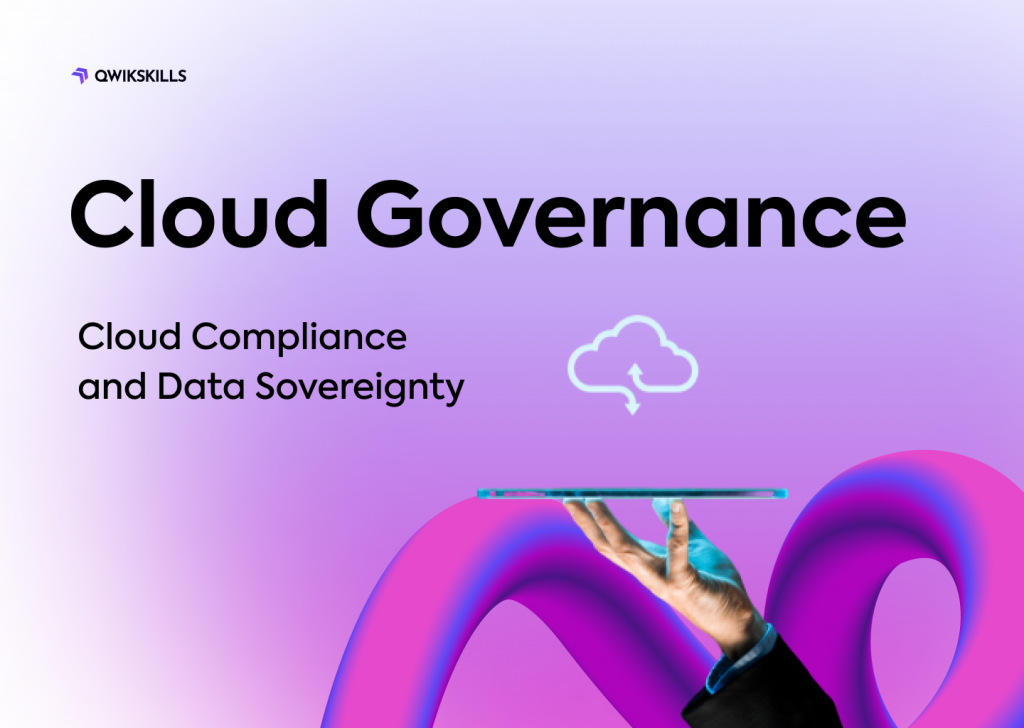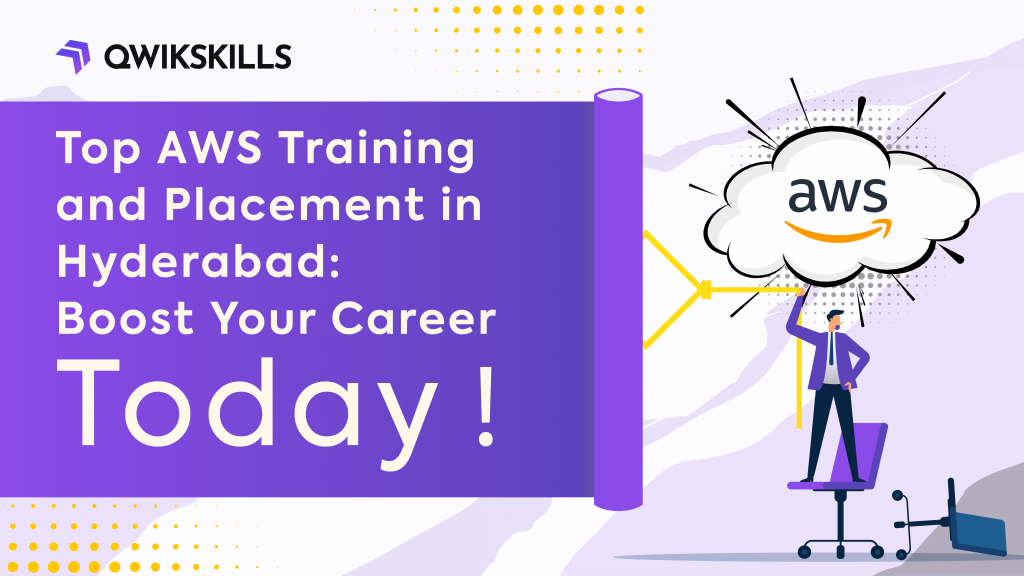With the advancement in technology and the internet, the demand for storing data has also increased, and cloud computing has grown directly proportional to these demands. As a brief introduction to cloud computing, it is a platform where multiple computing services such as data storage, processing power, servers, databases, and networking are available without the user’s interaction. If you plan to join the cloud computing domain, this article will prepare an interview related to the cloud.
Here are the top 50 Interview Questions in Cloud Computing:
Q1. What is cloud computing?
Cloud computing is a well-managed collection of services provided to the end-user by an organization. These services are not limited. Every vendor has its own set of services. However, the basic and most demanded cloud services include data storage, processing power in terms of servers, databases, network traffic management.
Q2. What are the basic attributes of cloud computing?
Cloud computing provides many features and services, and they are not limited. We have been observing many services being added regularly, considering the increasing demands of users. If we combine and categories the services, then it would be
- Scalability
- Availability
- Pay as you go
- Elasticity, Pooling, and Automation
- Easy to use
Q3. Effect of cloud computing on businesses?
Cloud computing has allowed businesses to become free from maintenance of their servers, scalability issues, and such hassles. Businesses use cloud services to automate these tasks and pay heed to their personal growth efficiently.
Also, cloud computing services are highly precise. They cannot be managed to such an extent by manual way, so businesses have proved that cloud computing is increasing their overall productivity. The data is now more secure and available to the users.
Q4. Tell me about cloud models.
Four types of cloud models are mentioned below:
- Public:Public cloud model provides services available to everyone. Anyone can use them.
- Private:In the private model, cloud services are available to small businesses and not available publicly.
- Community:In the community model, cloud services are managed by a third party, and the consumers can be from different businesses.
- Hybrid:It is a combination of public and private models. In this model, we can switch from one model to another depending on the nature of consumers.
Q5. What are some famous cloud providers?
Amazon AWS, Azure, Alibaba, and IBM are some famous cloud service providers. They have their number of followers. However, Amazon AWS and Google Azure have large communities and support.
Q6. Why should an organization move to cloud infrastructure?
If the organization has a variable number of consumers, meaning the load is not consistent. It is better to move towards a cloud platform because the resource will be triggered according to a load of requests. It will save both the power and cost of the organization.
Q7. Is data on the cloud more secure than having it on a premises server?
Yes, the cloud offers private clouds that implement security standards to secure the data of the user. However, on-premises servers always have security threats to them.
Q8. Mention some prominent services provided by Azure?
Azure is currently providing the Internet of Things, Artificial intelligence, Networking, storage, Migration management, databases, analytics, and more.
Q9. What is the difference between private and public cloud networks?
In a private cloud network, the data is available only to authorized users, and only the organizations owning the network have their data on this cloud.
A service provider manages the cloud in a public network, and data is available to every consumer.
Q10. What is a hybrid cloud model?
In the hybrid cloud model, the data center is inside the organization, and the organization maintains the private cloud while the CSP controls the public one.
Q11. Concerns with cloud computing
Although cloud computing is serving the whole world in many ways, there are still some concerns related to data integrity and legal reliability issues.
Q12. What are the components of cloud server machines?
Cloud server machines consist of components, like Processors, Memory units, graphic cards for video and graphics power, Motherboard, and more.
Q13. How is security ensured in cloud computing?
Cloud infrastructure uses virtual IPs, standard rules, and security rules to ensure there is no security threat to it.
Q14. List famous cloud-based applications
- Google Cloud Platform
- Microsoft Azure Platform
- Amazon Web Services
- VMware
- Salesforce
- Adobe Suite
- Kamatera
- phoenixNAP
- Red Hat
Q15. Why is creating cloud infrastructure inexpensive?
Cloud infrastructure comprises high-quality machines, a good location, power supply, protection to risks like climate, eternal and internal issues. So, it is an expensive setup.
Q16. What are the layers associated with cloud computing?
- Cloud controller
- Wairus
- Storage Controller
- Node Controller
- Cluster Controller
Q17. What is the Cloud controller layer?
It is the topmost layer of cloud computing. In this layer, configurable APIs are used to control the web servers and network.
Q18. What is Wairus?
It is a layer of cloud in which the storage is made scalable according to the user demand.
Q19. What is the Storage controller layer?
This layer manages the storage block of virtual machines.
Q20. What is a Node Controller?
It acts as a hypervisor and controls the execution, termination, and management of instances. Thus, it is the lowest layer of the cloud.
Q21. What is a cluster controller?
Manage the communication between resources of users and virtual machines.
Q22. Difference between cloud computing and mobile computing?
This question is very interesting from the interview point of view.
Mobile computing transfers data from one mobile device to another device, such as images, videos, audio, without any physical connection between them.
However, Cloud computing is a platform that manages computing resources without user interaction.
Q23. What should you know before moving to the cloud infrastructure?
- The risk associated with the data such as data breach or loss of data.
- Costs associated with cloud services.
- Which cloud services does your business need.
Q24. What are the three basic types of cloud?
Three basic types of cloud are:
- Public cloud
- Private cloud
- Professional cloud
Q25. What is a Performance cloud, and what is its role?
Performance clouds transfer huge amounts of data at a particular time. It is mostly used in gaming, analytical reports, or real-time graphics-related data transferring. In these cases, we need a large amount of data transfer carried out by the performance cloud.
Q26. What is a professional Cloud?
Professional cloud is designed to serve the business organizations and runs CRM, Emails, and multiple website web applications.
Q27. How does cloud computing save cost?
Cloud computing automatically assigns the resources to meet the users’ needs. Hence, it is cost-saving compared to on-premises servers, which may use unnecessary resources when not needed. It is called scalability.
Q28. Define Scalability.
According to the demand, scalability in the cloud can be defined as an automatic increase or decrease in computer resources. Its basic concept of cloud computing.
Q29. Define Elasticity.
Elasticity is another basic and important concept of cloud computing. The system can allocate and deallocate the resources according to the demand. So, it is a performance calibre of scalability.
Q30. Provide cloud computing layers.
- Infrastructure as a Service (IaaS)
- Platform as a Service (PaaS)
- Software as a Service (SaaS)
Q31. Define Infrastructure as a Service (IaaS)
It provides hardware resources within cloud infrastructures such as memory, ram, power supplies, and more.
Q32. Define Platform as a Service (PaaS)
It is used by application developers and provides a suitable environment for them.
Q33. Define Software as a Service (SaaS)
It enables users to leverage cloud applications without installing them in their systems. Instead, a portion of the application remains in the user system, while the rest in the cloud. Canva can be a good example of this.
Q34. What are data centers in the cloud?
Datacenter in the cloud is not a physical entity but is hosted somewhere on the internet. However, the physical data centers are located physically on the company premises.
Q35. What are containerized data centers?
As the name suggests, container data centers are relocatable. They allow the organization to have some more space and less heating around it. It needs planning and continuous power access ideas.
Q36. What are low-density data centers?
Density is the power consumed by a data center per square foot area. Low-density data centers are good for more robust processes. They try to limit the number of users for a server. Excessive heat is produced in it.
Q37. What is the purpose of cloud APIs?
Cloud APIs are a very important part of interview questions. Cloud application program interface provides the functionality of the application without developing or installing it. The user can integrate the APIs and use the application. For example – google drive APIs.
Q38. What are the two modes of SAAS?
- Simple Multi-tenancy
- Fine-grain multi-tenancy
Q39. Explain Simple Multi-tenancy
In Simple Multi-tenancy, each user has their amount of resources. Therefore, it requires more effort and time to fulfill the demand by adding or subtracting these resources from the infrastructure according to demand.
Q40. Explain fine-grain Multi-tenancy
Each user has the same amount of resources available. This mode is simple and easy for the user because the resource allocation is automatic according to demand.
Q41. How can you secure your data while transferring?
- Use antivirus to protect data
- Use encryption keys to store data
- Use a password to access the data
- AES, DES, RSA encryption algorithms should be implemented
- Test your data before transferring it to a live server
Q42. What do you know about Eucalyptus?
Eucalyptus is an acronym for Elastic Utility Computing Architecture for Linking Your Programs to Useful Resources. It is a paid and open-source software for building AWS-compatible hybrid and private cloud computing environments.
Q43. What do you know about Map Reduce?
Map-reduce is a google framework to spread data to multiple computers on the cloud. It works on large datasets and works in a distributed environment. Furthermore, it works both for structure and unstructured data sets.
Q44. What do you know about Apache Hadoop?
Hadoop creates a pool of similar file systems known as Hadoop. It is an open-source platform that clusters the data using HASH.
Q45. Mention some big database providers
Prominent giants of the market in terms of databases are:
- Google BigTable
- Amazon SimpleDB
- Cloud-Based SQL
Q46. What is a system integrator?
A system integrator is a person who is responsible for integrating the components of the cloud system so that the system works smoothly and as expected.
Q47. List some open source databases in the Cloud.
- MongoDB
- CouchDB
- LuidDB
Q48. Explain Hypervisor in cloud computing.
Hypervisor sits between the hardware and operating system. It logically shares the resources with the virtual machines and allows multiple guest operating systems to run simultaneously.
There are two types of hypervisors
- Type 1 hypervisor_allows the VM to run directly through host hardware.
- Type 2 hypervisor_allows the VM to run through the host operating system.
Q49. What are the distributed systems?
The distributed system is a network of computers connected. They may be located all around the globe and can be the same. A distributed environment consists of a web server, clusters, and clouds.
Q50. What is a cluster in cloud computing?
When multiple servers are combined, they form a cluster. Nodes in the cluster are aimed to perform the same task. Thus, they are different from grid computers in which each node can have different tasks to complete.
Checkout the Top 31 Kubernetes Interview Questions and Answers.



